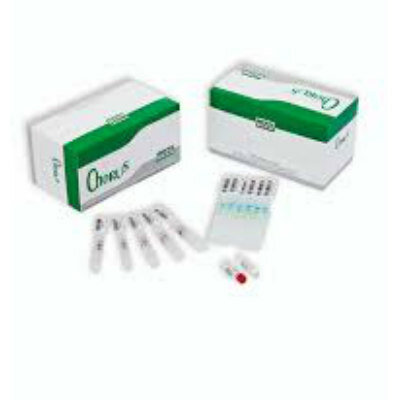Confocal Microscope Can Measure Single Molecule Within Cells
By LabMedica International staff writers
Posted on 12 Jan 2011
A US university is now one of only a few with a microscope so powerful that researchers can measure a single molecule within a cell.Posted on 12 Jan 2011
The instrument, a Carl Zeiss (Oberkochen, Germany) LSM780 laser-scanning confocal microscope, was purchased through a US$496,000 competitive grant awarded to the University of Delaware (UD; Newark, USA) from the US National Institutes of Health (NIH; Bethesda, MD, USA) and an additional $65,000 from the department of biological sciences at UD.
Confocal microscopes allow scientists to visualize the inner processes of cells and tissues with amazing clarity. The new microscope will aid biomedical researchers in making discoveries applicable to the development of cardiovascular disease, cataracts, osteoporosis, arthritis, and cancer, as well as contribute to the development of biomaterials for repairing or replacing damaged tissues.
Dr. Melinda Duncan, UD professor and director of graduate programs in the department of biological sciences, and Dr. Kirk Czymmek, associate professor of biological sciences and director of the Delaware Biotechnology Institute (DBI) Bio-Imaging Center at UD, developed the successful proposal.
The cutting edge microscope not only can monitor the movement of molecules at very high speed, but it also can measure very large objects such as an entire eye, according to Dr. Duncan, who does research on cataracts. "The experiments we can do now are as good as, or better than, those of our peers. There are questions we can answer now that we never could before,” Dr. Duncan noted.
Among the most exciting things Dr. Duncan's been able to see for the first time, due to the new research approach, are the ball and sockets found on the outside of lens fiber cells. Previously, these structures were only viewable with an electron microscope, which limited possible research studies of their function.
Another colleague, Dr. Liyun Wang, assistant professor of mechanical engineering, is studying how fluids diffuse through bone in her research to develop competent drug delivery systems to treat osteoporosis and arthritis.
"For the first time, we can measure these things,” Dr. Duncan stated. "And our productivity is much higher because we can collect and save the data much faster with a device that has modern lasers, computers, and electronics compared to our old microscope.”
The new microscope will help advance the research of 10 priority users at UD, currently funded by NIH for studies ranging from tissue engineering to breast cancer metastasis.
Related Links:
University of Delaware
Carl Zeiss













